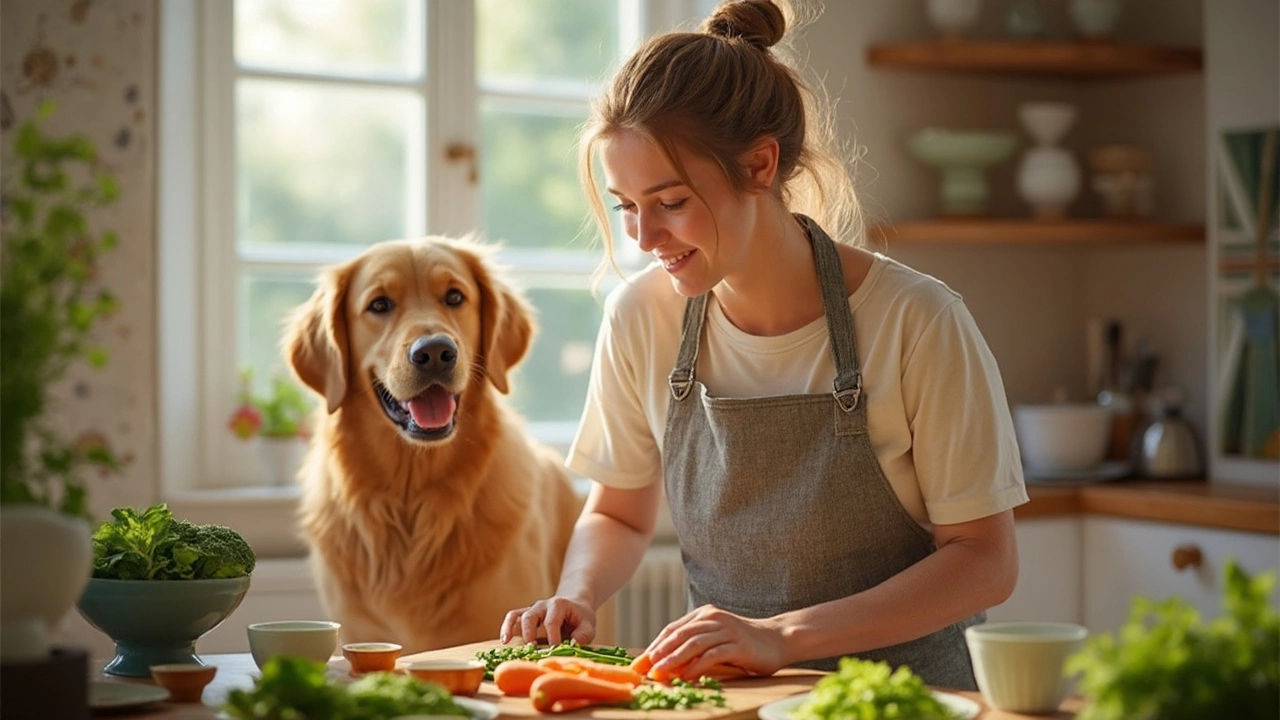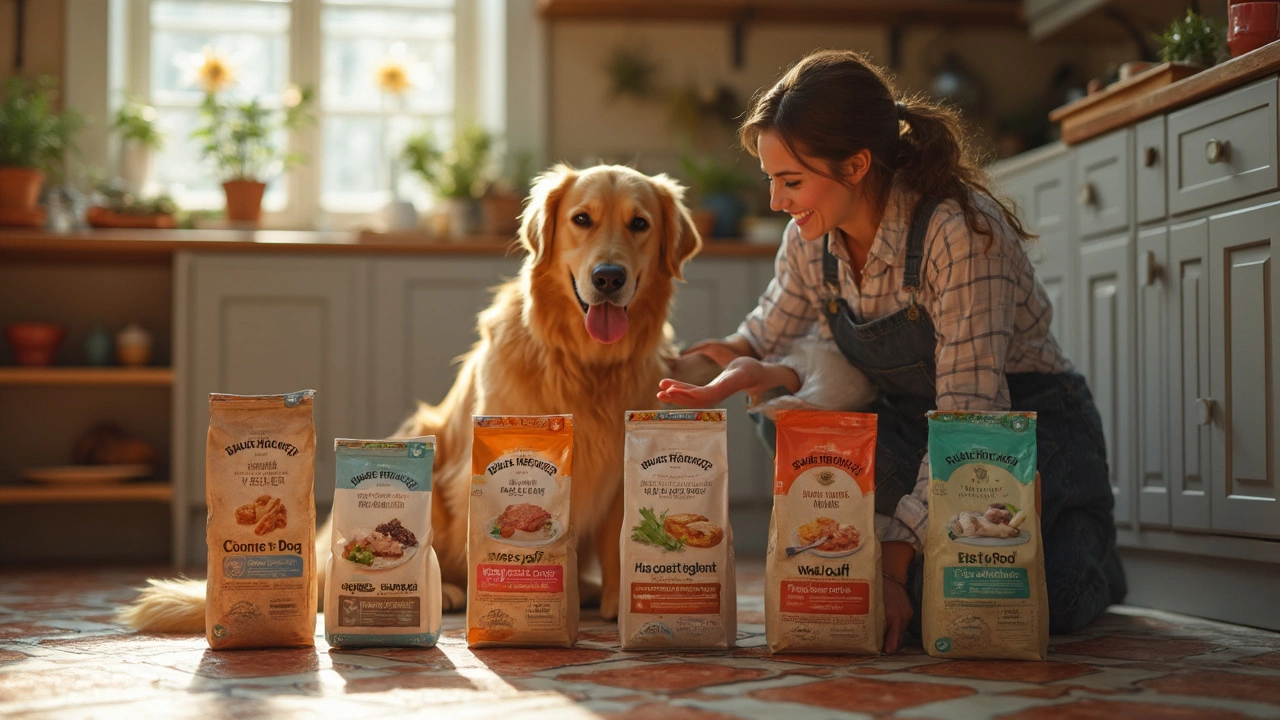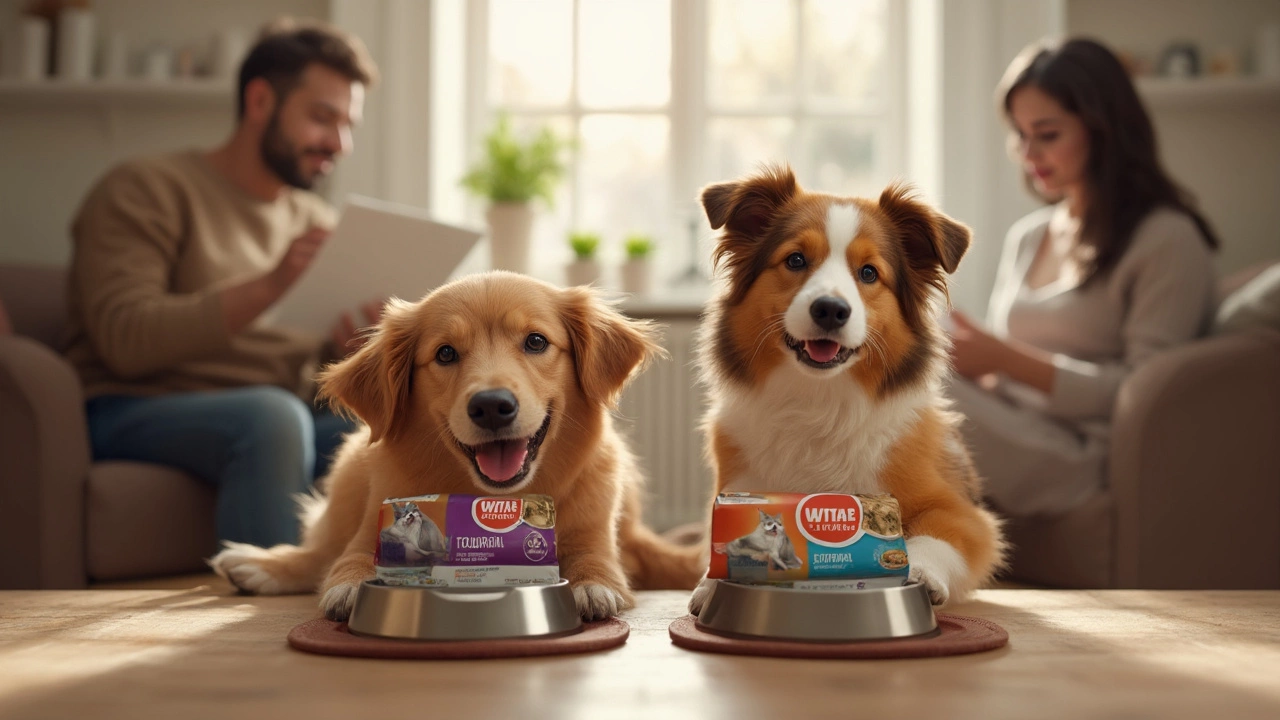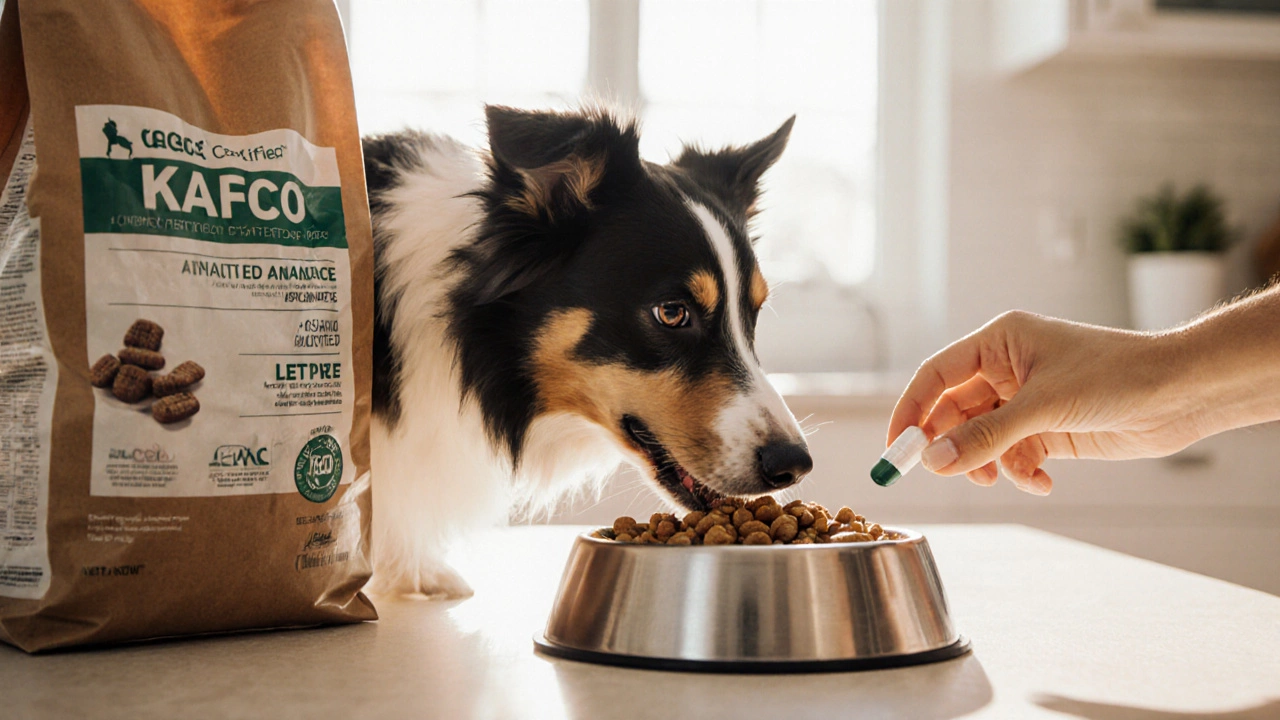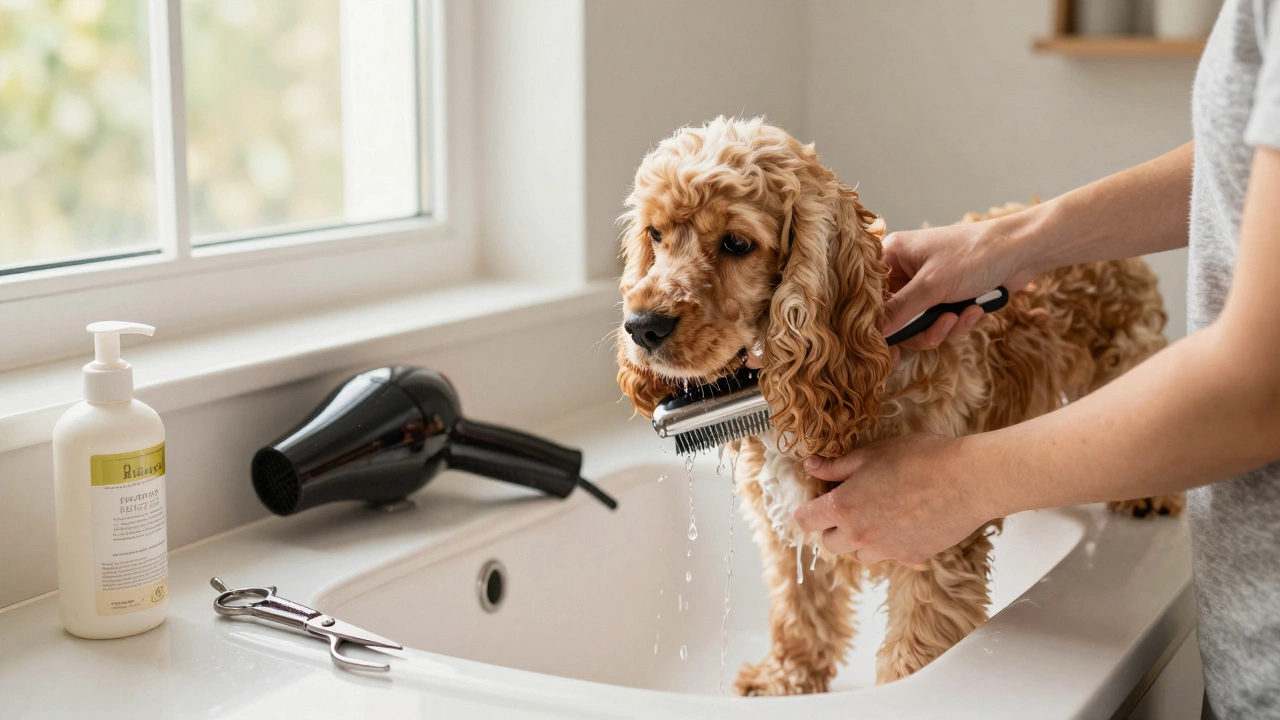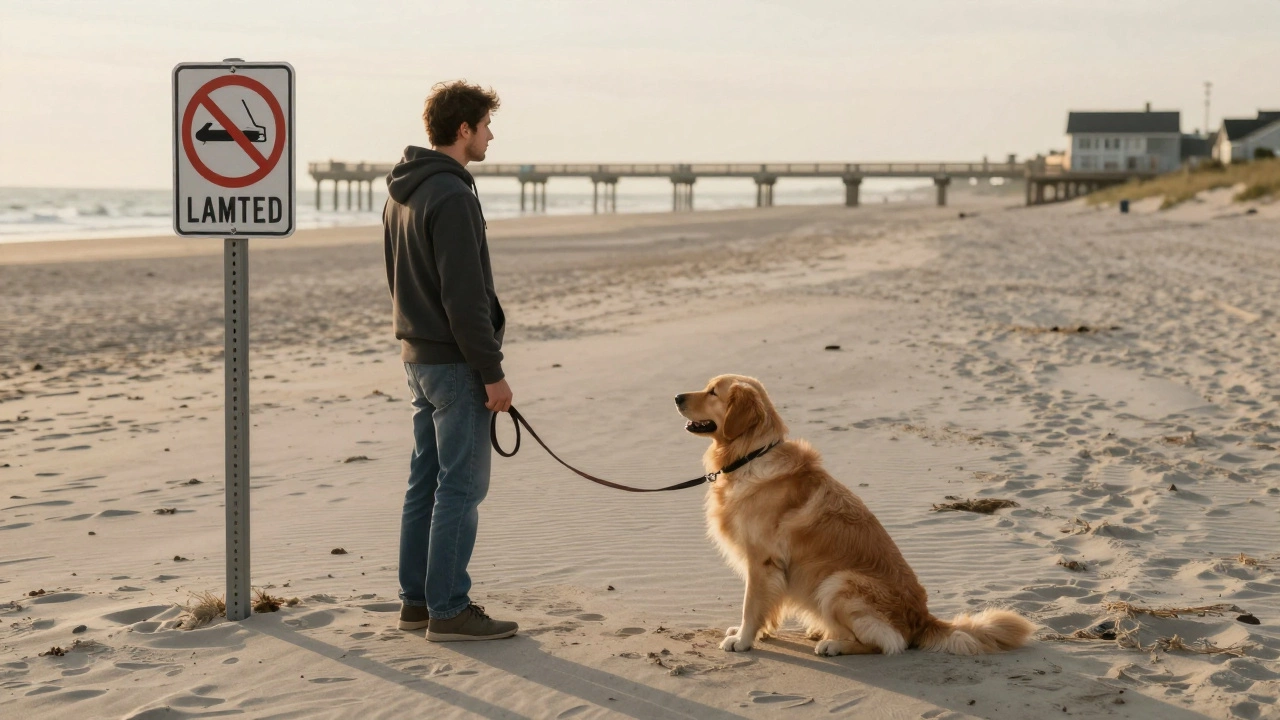You’ve probably seen those pictures of pups munching on carrots or chomping broccoli, but does your dog actually need vegetables? Turns out, adding some healthy veggies to your dog’s meals can support digestion, give their immune system a lift, and even freshen their breath. But not all vegetables are created equal—some are packed with vitamins, while others can cause stomach trouble (or worse).
If you’re thinking about what to toss in the bowl, don’t just go by what’s in your salad drawer. Dogs process food differently than we do. Broccoli florets? Good in small amounts. Spinach? Has some benefits, but you don’t want to go overboard. Carrots? They’re a safe bet and most dogs love the crunch. These veggies act as natural sources of fiber, antioxidants, and minerals without the weird additives you sometimes find in processed dog treats.
Not sure where to start? Keep it simple. Chopped green beans, sweet potato cubes (cooked and unsweetened), and slices of zucchini are top picks. Each of these offers something unique, from helping with weight control to keeping your pet’s gut humming along. Just remember—always serve veggies plain, without sauces or seasonings.
- Why Dogs Need Vegetables (and Which Ones Are Best)
- Safe Ways to Serve Veggies to Your Dog
- Veggies to Avoid: What Not to Feed
- Smart Tips for Mixing Vegetables Into Meals
Why Dogs Need Vegetables (and Which Ones Are Best)
Most people think of dogs as straight-up meat lovers, but here’s the deal—adding the healthiest vegetables for dogs to their diet can seriously benefit their health. Dogs are technically omnivores, so their bodies actually handle some plant foods pretty well. Veggies offer important things you won’t find in kibble alone, like fiber for smoother digestion, beta-carotene for eye and skin health, and antioxidants that help the immune system fight off junk.
Fiber is a big one, especially for dogs that struggle with their weight or get constipated. Carrots and green beans are packed with it, and a few pieces in the bowl can keep things moving (if you catch my drift). Sweet potatoes are also great—they have vitamin A, vitamin C, and manganese, and they’re easy on sensitive stomachs. Got a picky eater? Sometimes just one vitamin-rich veggie mixed in can boost the nutrition of plain dry food.
- Carrots: Low calorie, crunch factor, loaded with beta-carotene.
- Green beans: Full of fiber and iron, plus they fill up hungry pups with almost no calories.
- Broccoli: High in fiber and vitamin C. Small bites are plenty since too much can upset the tummy.
- Sweet potato: Complex carbs, great for dogs who need more fuel for playtime. Serve it cooked and plain—no sugar or spices.
- Zucchini: Safe for most dogs, brings vitamins and adds variety.
Curious how these stack up nutrition-wise? Check out this simple breakdown:
| Vegetable | Main Nutrients | Serving Tip |
|---|---|---|
| Carrots | Beta-carotene, Fiber | Raw or cooked, chopped |
| Green Beans | Iron, Fiber | Cooked, plain |
| Sweet Potato | Vitamin A, C, Manganese | Baked or boiled, no skin |
| Broccoli | Vitamin C, Fiber | Steamed, small pieces |
| Zucchini | Vitamins C, B6, Potassium | Lightly cooked or raw |
Here’s something people get wrong: just tossing veggies in a dog’s bowl isn’t magic. You want to introduce them slowly, watch for any stomach issues, and always serve them plain—skip the butter, oil, and salt. Dogs aren’t humans, so they need a simple approach. Use these safe dog veggies to balance their meals, add nutrients, and keep things interesting at dinnertime.
Safe Ways to Serve Veggies to Your Dog
So you’re ready to add healthiest vegetables for dogs to your pup’s menu. The key: keep it simple, safe, and easy to digest. Dogs don’t need fancy dishes—plain and natural works best.
Raw veggies might seem handy, but many dogs can’t break them down well. Cooking certain vegetables softens them and makes the nutrients easier for your dog to absorb. Steaming or boiling is usually best. Avoid frying and keep oils, butter, or spices far away from your dog’s food bowl.
- Carrots: Washed, peeled, and cut into slices or small sticks. Feed them raw for a crunchy treat, or steam them for a softer snack.
- Green beans: Chop and steam. They’re low-cal and make great training rewards.
- Sweet potatoes: Cook thoroughly (no skin, no sugar, no salt), then cut into cubes or mash. Never feed raw—it’s too tough on their stomach.
- Zucchini: Slice and steam or serve raw in small portions.
- Broccoli: Only give small florets and steam them—raw broccoli can make some dogs gassy.
When introducing a new veggie, start slow. Offer a little, and watch for any signs of tummy upset or allergies (like itching or diarrhea). Stay patient—just like us, some dogs need time to warm up to new flavors.
Here's a quick look at how some popular veggies stack up for ease of serving:
| Vegetable | Best Prep Method | Safe Serving Size |
|---|---|---|
| Carrots | Raw or steamed | 2-3 slices/sticks per 20lbs |
| Green beans | Steamed | A small handful |
| Sweet potatoes | Cooked, mashed/cubed | 1-2 tablespoons |
| Zucchini | Raw or steamed | 2-3 slices |
Skip canned or pickled vegetables—they often pack a salty punch that’s not healthy for your dog. Just remember: plain, simple, and in moderation keeps it safe and smart.
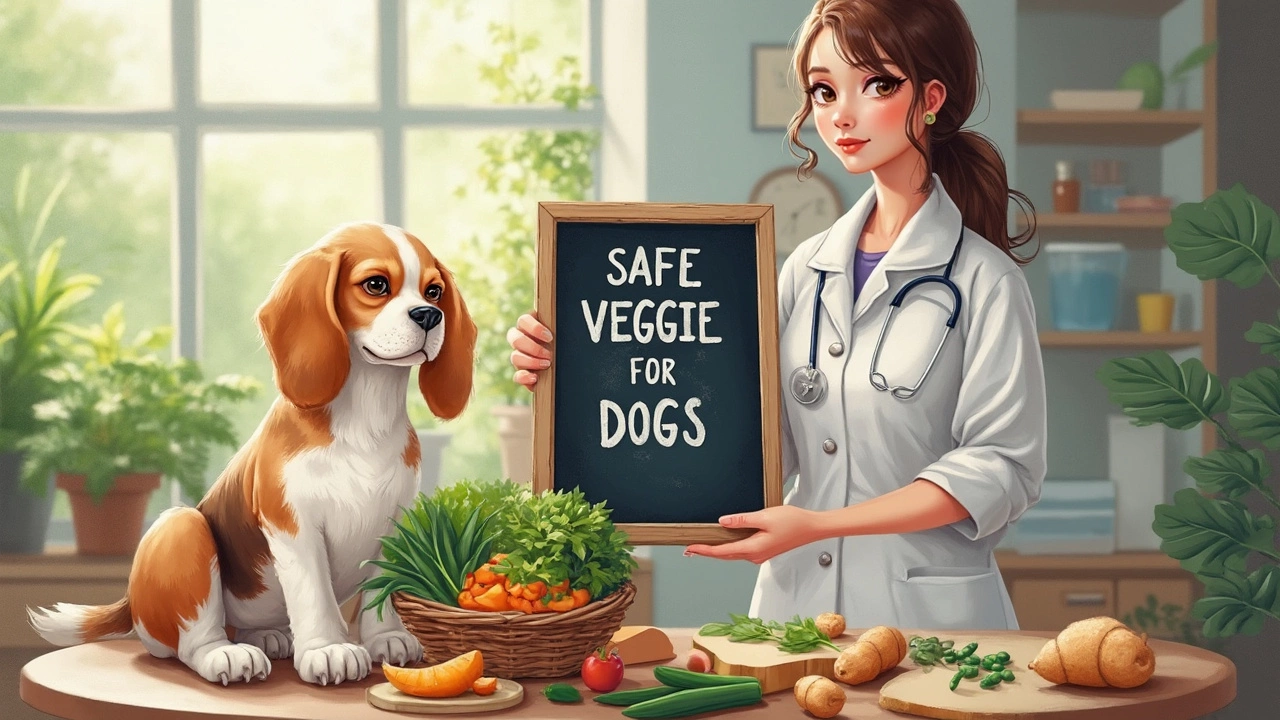
Veggies to Avoid: What Not to Feed
Not all veggies in your kitchen are safe for your dog. Some can mess up their stomach, while others are actually toxic. You need to know these no-go foods to keep your dog out of trouble.
- Onions and Garlic: These may taste great to us, but for dogs, they’re a nightmare. Both can damage your dog’s red blood cells, causing anemia. Even powders or cooked bits are dangerous.
- Mushrooms (Store-bought or Wild): Some store-bought mushrooms are not deadly, but many wild ones are super toxic for dogs and can cause vomiting, organ failure, or worse. Don’t take the risk—skip all mushrooms in your dog’s diet.
- Avocado: This one trips up a lot of pet owners. Avocado contains persin, which isn’t good for dogs and may trigger vomiting and diarrhea.
- Raw Potatoes: Raw potatoes have solanine, which can be toxic to dogs. Cooked plain potatoes in small amounts are usually fine, but avoid letting your dog munch on raw spuds or anything green and sprouting.
- Tomatoes (Green/Unripe): Ripe red tomatoes are usually okay, but avoid giving your dog green tomatoes or tomato plants. The green parts have solanine too, which can mess with your dog's nerves and tummy.
- Rhubarb: The leaves especially are bad news. They can drop your dog's calcium levels, leading to kidney trouble or worse.
Here’s a quick look at how these veggies can affect your dog, straight from actual vet reports:
| Vegetable | Main Danger | Type of Harm |
|---|---|---|
| Onion/Garlic | Thiosulfate | Anemia, weakness |
| Mushroom | Unknown toxins | Vomiting, organ failure |
| Avocado | Persin | Digestive upset |
| Raw Potato | Solanine | Neurological, stomach upset |
| Tomato (Green) | Solanine | Nerve, gut issues |
| Rhubarb | Oxalates | Kidney failure |
Keep these off your dog’s plate—accidents can be costly and stressful. If your dog eats any of these vegetables by mistake, call your vet or an animal poison hotline as soon as possible. Sticking with the healthiest vegetables for dogs will save you a ton of worry and trips to the vet.
Smart Tips for Mixing Vegetables Into Meals
Want your dog to actually eat those healthiest vegetables for dogs? Mixing them in right makes a huge difference. Here’s how you can get more veggies into those meals without weirding your pup out—or causing belly trouble.
- Start slow. Add just a spoonful of cooked or raw veggies like carrots, green beans, or zucchini to your dog’s regular food. This helps their system adjust.
- Always chop veggies into small, bite-sized chunks—big pieces can be hard to chew, especially for smaller dogs.
- Stick to plain. No butter, oil, or spices. Dogs only need the veggie, nothing fancy.
- Steam or microwave tougher veggies (like broccoli or sweet potato) until soft. Raw carrots and green beans can be fun for crunch, but some dogs prefer them slightly softened.
- If your dog is picky, try mashing the veggies and blending them into canned or wet food. You can also freeze veggie pieces and use them as cool treats in hot weather.
Going for variety? Rotate between three or four safe veggies each week. This gives different nutrients and keeps your dog interested. Just don’t overdo it—a good rule of thumb is that veggies should make up less than 10% of the total meal.
For extra help, here’s a quick table showing suggested serving sizes for common safe dog veggies based on your dog’s weight:
| Dog Weight (lbs) | Veggies Per Meal (cups) |
|---|---|
| 10–25 | 1/8 – 1/4 |
| 25–50 | 1/4 – 1/2 |
| 50–90 | 1/2 – 1 |
Always watch for signs like upset stomach or changes in poop. If your dog’s good, you can stick with mixing things up. And don’t forget to keep a list of veggies that are off-limits—like onions and garlic—far away from the food bowl.
Giving your dog vegetables isn’t about making salad lovers out of them—it’s about boosting nutrition with real, whole foods. When you keep it simple and consistent, you’re setting your dog up for a healthier, happier life.

